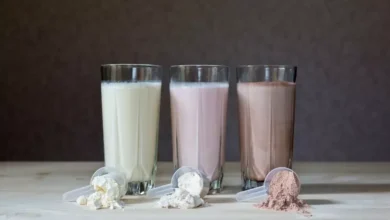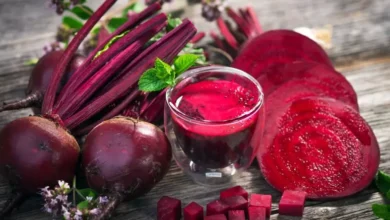The Truth About Sugar: How Much Is Too Much?
Sugar is everywhere. From your morning coffee to your favorite pasta sauce, it sneaks into foods both sweet and savory. While a small amount of sugar can be part of a balanced diet, excessive consumption is linked to serious health issues like obesity, type 2 diabetes, heart disease, and even mental health problems. But how much sugar is too much? And how can you reduce your intake without feeling deprived?
Let’s break down the facts about sugar and explore smart strategies to manage it in your daily diet.
Understanding the Types of Sugar
Not all sugars are created equal. Here are the main types you need to know:
- Naturally occurring sugars: Found in whole fruits, vegetables, and dairy (like lactose in milk and fructose in fruit). These come packaged with fiber, vitamins, and minerals, which slow sugar absorption and provide nutritional benefits.
- Added sugars: Sugars and syrups added during processing or preparation. This includes everything from table sugar and honey to high-fructose corn syrup in soft drinks, baked goods, and snacks.
Most health concerns are related to added sugars, not natural sugars found in whole foods.
How Much Sugar Is Too Much?
Health authorities have set guidelines to help consumers limit added sugar intake:
- World Health Organization (WHO): Recommends that added sugars make up less than 10% of your total daily calories. For even greater health benefits, they suggest reducing it to below 5%.
- American Heart Association (AHA):
- No more than 25 grams (6 teaspoons) per day for women
- No more than 36 grams (9 teaspoons) per day for men
To put that in perspective:
- A single can of soda can contain up to 39 grams of added sugar—already over the recommended limit.
Why Too Much Sugar Is Harmful
Excessive sugar consumption can lead to a variety of short-term and long-term health issues:
- Weight gain: Sugary foods are high in calories and low in satiety, leading to overeating.
- Insulin resistance: High sugar intake over time increases the risk of type 2 diabetes.
- Heart disease: Sugar contributes to chronic inflammation, high triglycerides, and hypertension.
- Fatty liver: Excess fructose is metabolized in the liver and stored as fat.
- Tooth decay: Sugar feeds bacteria in the mouth, leading to cavities and gum disease.
- Mood swings and energy crashes: Quick sugar highs are followed by sharp crashes, affecting mood and focus.
Hidden Sources of Added Sugar
You might be surprised by how many everyday foods contain added sugar. Some common culprits include:
- Breakfast cereals and granola
- Flavored yogurts
- Salad dressings
- Pasta sauces
- Canned soups
- Energy bars
- Bread and sandwich buns
- Condiments like ketchup and barbecue sauce
Always check the nutrition label and ingredients list. Look for these names that indicate added sugar:
- Sucrose
- Glucose
- Fructose
- Maltose
- Dextrose
- Corn syrup
- Cane juice
- Agave nectar
- Honey
- Molasses
How to Cut Back on Sugar (Without Feeling Miserable)
Reducing sugar doesn’t have to mean giving up all the foods you love. Here are practical tips to help:
1. Read Labels Carefully
Get into the habit of checking sugar content per serving. Aim for products with 0–5g of added sugar whenever possible.
2. Cook at Home
Preparing meals from scratch gives you control over what goes into your food. Use natural seasonings like herbs and spices to enhance flavor without added sugar.
3. Choose Unsweetened Products
Opt for unsweetened versions of yogurt, plant-based milk, and cereal. Add your own sweetness with fruit or a dash of cinnamon if needed.
4. Swap Sweets for Naturally Sweet Foods
Craving dessert? Choose whole fruits like berries, apples, or bananas. They offer fiber and nutrients that balance out their natural sugars.
5. Gradually Reduce Sugar in Coffee or Tea
If you take your drinks sweet, start cutting down slowly until your taste buds adjust.
6. Don’t Rely on “Sugar-Free” Labels
Products labeled “sugar-free” may contain artificial sweeteners or sugar alcohols, which can still affect your gut and cravings. Focus on whole, unprocessed foods instead.
7. Make Treats Occasional
You don’t have to give up sweets forever. Instead, enjoy your favorite treats mindfully and occasionally, rather than daily.
Healthier Alternatives to Sugar
Instead of added sugar, try using:
- Fruit purée (like mashed bananas or applesauce) in baking
- Cinnamon or vanilla for natural sweetness in oats or smoothies
- Dates for energy bites or homemade bars
- Stevia or monk fruit for calorie-free sweetening (in moderation)
A Balanced Approach
You don’t need to fear sugar—just be mindful of how much you consume and where it comes from. Natural sugars in fruits and vegetables are fine and even beneficial. The real concern is the steady stream of added sugars hiding in processed foods.
By making small, consistent changes and becoming a smarter shopper, you can take control of your sugar intake without sacrificing flavor or enjoyment. Your body—and your energy levels—will thank you.

Hello! My name is Alan Teixeira and I am passionate about helping people live healthier, more balanced lives. From mindful eating to daily habits that promote physical and mental well-being, I believe that small, consistent changes can lead to powerful transformations.
I created this blog to share practical tips, reliable information, and thoughtful insights that can inspire you to take better care of yourself—with balance, mindfulness, and positivity.
If you are looking to improve your health, nourish your body, and build a lighter, more fulfilling routine, you are in the right place. Welcome!





